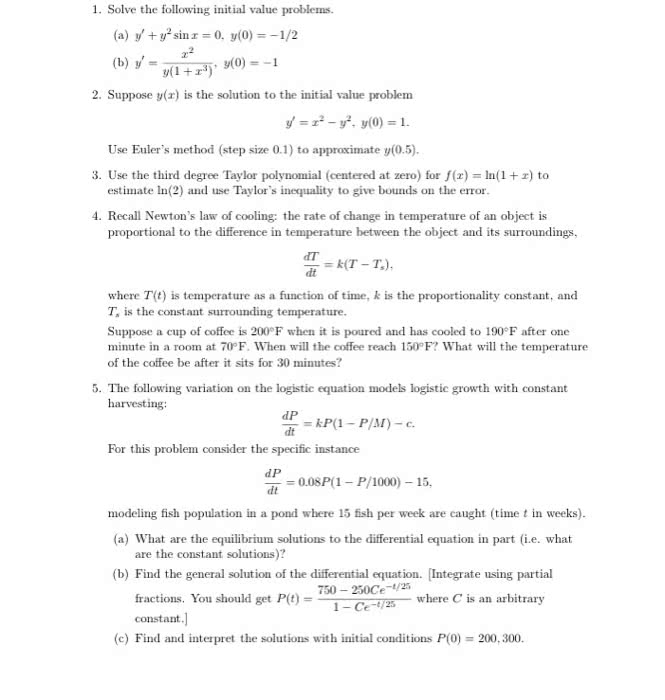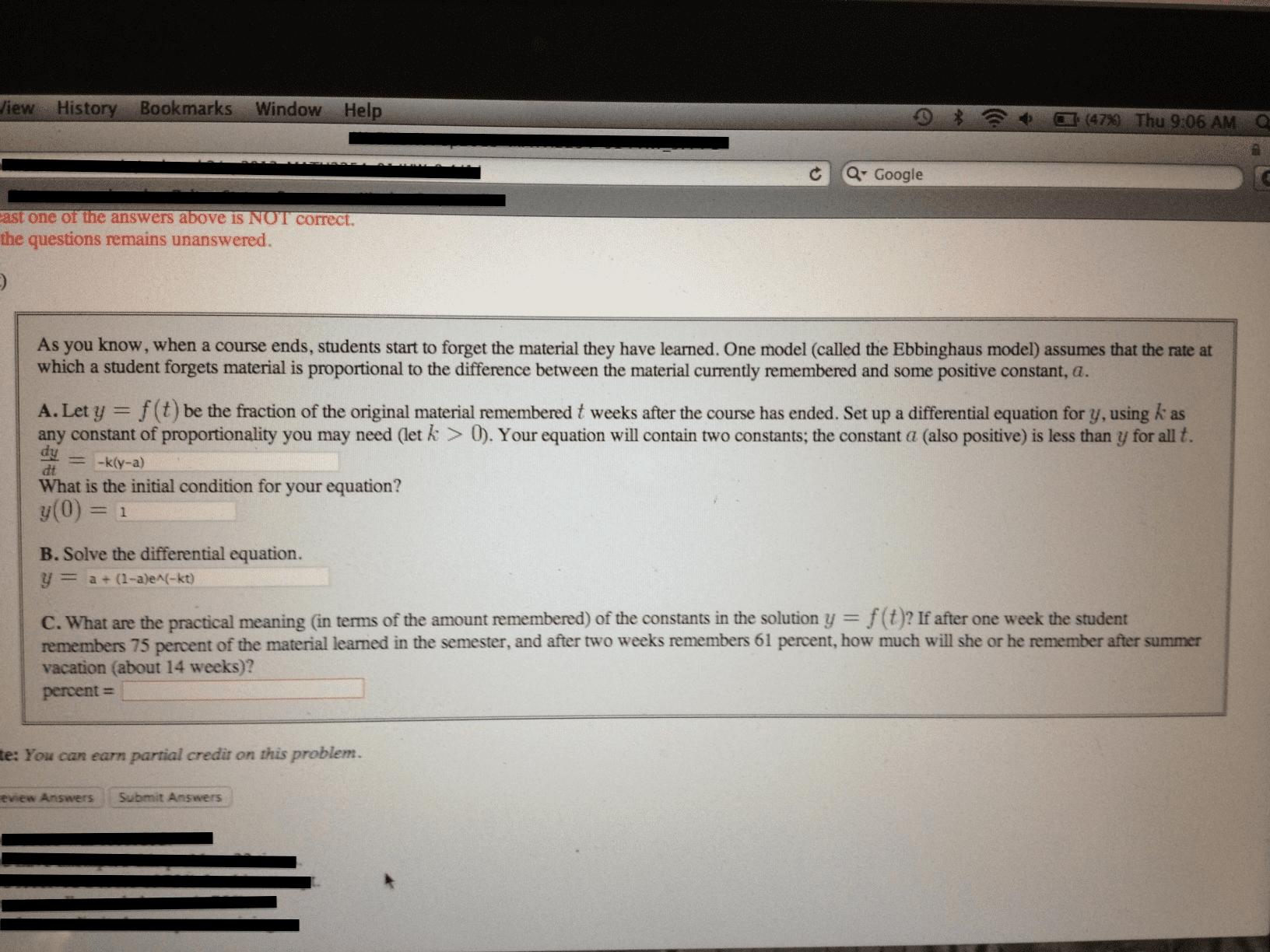MATH 111 Lecture Notes - Lecture 16: Spontaneous Emission
Document Summary
1476- lecture 16 - exponential growth and decay, related rates. Where f(t) is the number of individuals in a population. Then, f (t)= kf(t) for some constant k. The rate of growth [ f (t) ] is proportional to the population f(t) From f (t)= kf(t) we can define the differential equation: If k>0, y will increase, and this is called the law of natural growth. If k<0, y will decrease, and this is called the law of natural decay. A differential equation is an equation with an unknown function. The solution to the differential equation dy/dt= ky is: and its derivative. K is the relative growth/ decay rate. P(t) for any population is equal to: Some substances spontaneously emit radiation, which decreases their mass over time. Most radiation is measured in terms of lives, where m(t)= m0. When writing the equation for a life, k= - ln 2/ t*



